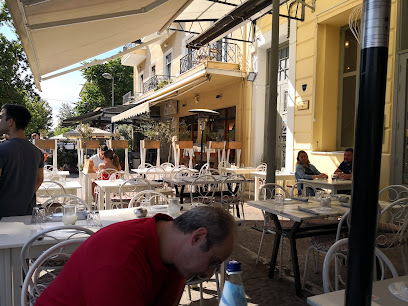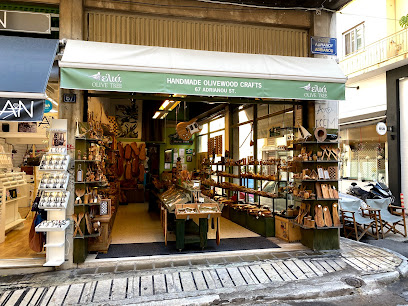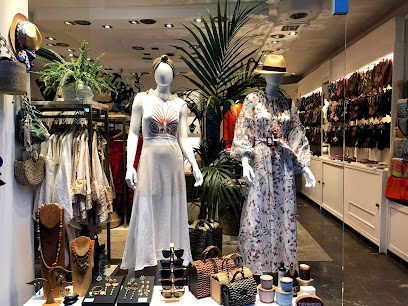
Monastiraki: The Heartbeat of Athens
Explore Monastiraki in Athens: A captivating blend of ancient history, vibrant markets, and authentic Greek cuisine, all set against the backdrop of the iconic Acropolis.
Monastiraki, nestled in the heart of Athens, is a vibrant neighborhood that seamlessly blends history with modernity. This area is renowned for its bustling flea market, ancient ruins, and lively atmosphere. As you wander through Monastiraki's narrow streets, you'll encounter a mix of traditional tavernas, trendy cafes, and unique shops that sell everything from handmade jewelry to vintage records. History enthusiasts will be captivated by the proximity of ancient landmarks such as the Ancient Agora, Hadrian's Library, and the Roman Forum. These historical sites offer a glimpse into Athens' rich past, making Monastiraki a must-visit for anyone interested in ancient civilizations. Don't forget to visit the Monastiraki Square, where you can admire the stunning Tzistarakis Mosque and the picturesque views of the Acropolis. Monastiraki is also a food lover's paradise. The neighborhood is dotted with numerous eateries offering traditional Greek cuisine. Savor dishes like souvlaki, moussaka, and fresh seafood while enjoying the lively street performers and musicians that add to the area's charm. For those who love to shop, the Monastiraki Flea Market is a treasure trove of antiques, souvenirs, and quirky finds that you won't want to miss.
Local tips in Monastiraki
- Visit early in the morning to avoid the crowds and enjoy a more relaxed experience.
- Wear comfortable shoes as the streets are cobblestoned and can be uneven.
- Keep an eye on your belongings, especially in crowded areas like the flea market.
- Try to learn a few basic Greek phrases; locals appreciate the effort and it enhances your experience.
- Don't miss sunset views from a rooftop bar for a magical perspective of the Acropolis.
Monastiraki: The Heartbeat of Athens
Monastiraki, nestled in the heart of Athens, is a vibrant neighborhood that seamlessly blends history with modernity. This area is renowned for its bustling flea market, ancient ruins, and lively atmosphere. As you wander through Monastiraki's narrow streets, you'll encounter a mix of traditional tavernas, trendy cafes, and unique shops that sell everything from handmade jewelry to vintage records. History enthusiasts will be captivated by the proximity of ancient landmarks such as the Ancient Agora, Hadrian's Library, and the Roman Forum. These historical sites offer a glimpse into Athens' rich past, making Monastiraki a must-visit for anyone interested in ancient civilizations. Don't forget to visit the Monastiraki Square, where you can admire the stunning Tzistarakis Mosque and the picturesque views of the Acropolis. Monastiraki is also a food lover's paradise. The neighborhood is dotted with numerous eateries offering traditional Greek cuisine. Savor dishes like souvlaki, moussaka, and fresh seafood while enjoying the lively street performers and musicians that add to the area's charm. For those who love to shop, the Monastiraki Flea Market is a treasure trove of antiques, souvenirs, and quirky finds that you won't want to miss.
Iconic landmarks you can’t miss
Monastiraki Square
Experience the vibrant culture and rich history of Athens at Monastiraki Square, where ancient ruins meet lively markets and delicious local cuisine.

Roman Forum of Athens (Roman Agora)
Explore the Roman Forum of Athens, a historical landmark rich with ancient stories and breathtaking architecture that reflects the grandeur of Roman civilization.

Monastiraki Flea Market
Dive into the eclectic charm of Monastiraki Flea Market in Athens, where unique antiques, local crafts, and delicious street food await every traveler.

Athens Hall Of Horrors
Discover the ultimate haunted experience at the Athens Hall of Horrors, where fear meets fun in the vibrant heart of Athens.

Museum of Modern Greek Culture
Discover the artistic heritage of Greece at the Museum of Modern Greek Culture, where history and creativity intertwine in the heart of Athens.

Old Madrasa Gate
Discover the Old Madrasa Gate, a historical gem in Athens that embodies the city's rich heritage and architectural splendor, perfect for every traveler.

Early Christian Quatrefoil Building - Basilica of Megale Panagia
Discover the Basilica of Megale Panagia, an early Christian architectural gem in Athens, rich in history and cultural significance.

Eridanus Stream
Explore Eridanus Stream, a tranquil historical landmark in Athens, where nature meets the rich tapestry of ancient Greek history.

Monopteros
Explore Monopteros, a breathtaking historical landmark in Athens offering architectural beauty and serene views of the city.

Late Roman tower wall foundations
Explore the fascinating Late Roman tower wall foundations in Athens, a historical landmark revealing the city’s architectural heritage and ancient history.

Unmissable attractions to see
Monastiraki Square
Discover Monastiraki Square: Athens' vibrant hub where ancient history, bustling markets, and delicious Greek cuisine come together in a captivating atmosphere.

Late Roman tower wall foundations
Discover the remnants of ancient military architecture at the Late Roman tower wall foundations in the heart of Athens, a historical gem for every traveler.

Καρυάτιδες που Κλαίνε
Explore the iconic Karyatides of Athens, a breathtaking tourist attraction steeped in ancient history and architectural beauty.

Essential places to dine
Maiandros Restaurant
Discover the heart of Greek cuisine at Maiandros Restaurant in Athens - where tradition meets flavor in every dish.

Efcharis restaurant
Experience authentic Greek cuisine at Efcharis Restaurant in Athens – where tradition meets taste.

Kuzina
Discover Kuzina: A top-tier Greek restaurant in Athens offering exquisite dishes and stunning views that celebrate Greece's culinary heritage.

The Kyklamino
Discover delightful small plates at The Kyklamino in Athens—an inviting destination celebrating Greek flavors in a vibrant atmosphere.

Dia Tauta Restaurant
Experience authentic Greek cuisine at Dia Tauta Restaurant in Athens - a perfect blend of flavor and culture in every bite.

Antica Restaurant & Cafe
Experience authentic Greek cuisine at Antica Restaurant & Cafe in Athens - where tradition meets taste in a vibrant setting.

Μοma
Experience authentic Greek cuisine with a modern twist at Μοma - A culinary gem in the heart of Athens.

A Little Taste of Home Restaurant
Experience authentic Greek cuisine at A Little Taste of Home Restaurant in Athens—where every dish tells a story.

ΑΤΤΑΛΟΣ εστιατόριο-μαγειρείο
Savor authentic Greek flavors at Attalos Restaurant in Athens - a cozy haven for food lovers seeking traditional small plates.

Dipylo Restaurant
Experience authentic Greek cuisine at Dipylo Restaurant in Athens – where tradition meets taste in every delicious bite.

Markets, malls and hidden boutiques
Kilo-Shop
Explore Kilo-Shop, Athens' premier vintage clothing store, offering unique finds and sustainable fashion in a vibrant shopping atmosphere.

Forget Me Not
Explore Forget Me Not in Athens for unique souvenirs and local crafts that capture Greek culture and creativity.

HIPPIE SHOP - ΕΝΔΥΣΗ - ΑΘΗΝΑ
Explore the vibrant fashion scene at Hippie Shop in Athens, offering unique clothing styles and eclectic accessories for every trendsetter.

Olive Tree Store
Discover unique Greek gifts at Olive Tree Store, a charming shop in Athens offering handcrafted treasures and local handicrafts.

Treasure House - Vintage, Handmade & Upcycled Clothing
Explore Athens' unique vintage clothing store, Treasure House, featuring handmade and upcycled fashion treasures for the eco-conscious traveler.

The Concept Store Art & Industry
Discover unique vintage clothing and accessories at The Concept Store Art & Industry, a must-visit destination in Athens for fashion enthusiasts.

ARARAT Hat Boutique
Discover the elegance of ARARAT Hat Boutique in Athens, where stylish hats and unique fashion accessories await to elevate your wardrobe.

Hermes
Discover unique Greek souvenirs at Hermes, the perfect novelty store for capturing the spirit of Athens and taking home cherished memories.

Nomad Concept Store
Explore the vibrant Nomad Concept Store in Athens for unique gifts and stylish finds that embody local creativity and craftsmanship.

T-Greeks Shop Athens
Explore T-Greeks Shop in Athens for unique souvenirs that reflect the beauty and culture of Greece, from handcrafted apparel to stunning home decor.

Essential bars & hidden hideouts
Couleur Locale
Experience the best of Athens at Couleur Locale, where Mediterranean flavors meet stunning views of the Acropolis for an unforgettable culinary journey.

360 Cocktail Bar
Experience breathtaking views and exquisite cocktails at 360 Cocktail Bar in Athens, where every sip is a moment to remember.

City ZEN All Day Bar Restaurant
Discover the essence of Athens at City ZEN All Day Bar Restaurant, where every meal is a celebration of flavor and culture.

The James Joyce Irish Pub
Discover the authentic taste of Ireland at The James Joyce Irish Pub in Athens, where good food and great company await.

Buena Vista Social Bar
Discover the vibrant Latin American spirit at Buena Vista Social Bar in Athens, where cocktails and music create unforgettable nights.

Diego
Experience the vibrant nightlife of Athens at Diego, a premier bar known for its stylish decor and delicious cocktails.

MONK Wine Bar
Explore MONK Wine Bar in Athens for an unforgettable wine experience, featuring a diverse selection and a cozy atmosphere perfect for relaxation.

Theta
Discover Theta, a premier cocktail bar in Athens, where exquisite drinks and a vibrant atmosphere create the perfect night out.

Thesis 7
Experience the artistic allure of Thesis 7, where vibrant cocktails and live music blend seamlessly in the heart of Athens.

Norman Athens Bar
Discover the vibrant nightlife of Athens at Norman Athens Bar, where unique cocktails and a lively atmosphere await you in the heart of the city.

Local Phrases
-
- HelloΓεια σας
[Yia sas] - GoodbyeΑντίο
[Adio] - YesΝαι
[Ne] - NoΌχι
[Ohi] - Please/You're welcomeΠαρακαλώ
[Parakalo] - Thank youΕυχαριστώ
[Efharisto] - Excuse me/SorryΣυγγνώμη
[Signomi] - How are you?Τι κάνετε;
[Ti kanete?] - Fine. And you?Καλά. Εσείς;
[Kala. Esis?] - Do you speak English?Μιλάτε Αγγλικά;
[Milate Agglika?] - I don't understandΔεν καταλαβαίνω
[Den katalaveno]
- HelloΓεια σας
-
- I'd like to see the menu, pleaseΘα ήθελα να δω το μενού, παρακαλώ
[Tha ithela na do to menou, parakalo] - I don't eat meatΔεν τρώω κρέας
[Den troo kreas] - Cheers!ΥΓΕΙΑ!
[Yia] - I would like to pay, pleaseΘα ήθελα να πληρώσω, παρακαλώ
[Tha ithela na plirosso, parakalo]
- I'd like to see the menu, pleaseΘα ήθελα να δω το μενού, παρακαλώ
-
- Help!Βοήθεια!
[Voithia!] - Go away!Φύγε!
[Fiye!] - Call the Police!Καλέστε την Αστυνομία!
[Kaleste tin Astinomia!] - Call a doctor!Καλέστε ένα γιατρό!
[Kaleste ena yatro!] - I'm lostΈχω χαθεί
[Eho hathi] - I'm illΕίμαι άρρωστος
[Eimai arrostos]
- Help!Βοήθεια!
-
- I'd like to buy...Θα ήθελα να αγοράσω...
[Tha ithela na agoraso...] - I'm just lookingΑπλά κοιτάω
[Apla kitao] - How much is it?Πόσο κοστίζει;
[Poso kostizi?] - That's too expensiveΑυτό είναι πολύ ακριβό
[Afto ine poli akrivo] - Can you lower the price?Μπορείτε να μειώσετε την τιμή;
[Borite na miosete tin timi?]
- I'd like to buy...Θα ήθελα να αγοράσω...
-
- What time is it?Τι ώρα είναι;
[Ti ora ine?] - It's one o'clockΕίναι μία ώρα
[Ine mia ora] - Half past (10)Μισή (10)
[Misi (Deka)] - MorningΠρωί
[Proi] - AfternoonΑπόγευμα
[Apoyevma] - EveningΒράδυ
[Vradi] - YesterdayΧθες
[Hthes] - TodayΣήμερα
[Simera] - TomorrowΑύριο
[Avrio] - 1Ένα
[Ena] - 2Δύο
[Dio] - 3Τρία
[Tria] - 4Τέσσερα
[Tessera] - 5Πέντε
[Pente] - 6Έξι
[Exi] - 7Εφτά
[Efta] - 8Οκτώ
[Okto] - 9Εννιά
[Ennia] - 10Δέκα
[Deka]
- What time is it?Τι ώρα είναι;
-
- Where's a/the...?Πού είναι ένας/η...;
[Pou ine enas/i...?] - What's the address?Ποια είναι η διεύθυνση;
[Pia ine i diefthinsi?] - Can you show me (on the map)?Μπορείτε να μου δείξετε (στο χάρτη);
[Borite na mou dixete (sto charti)?] - When's the next (bus)?Πότε είναι το επόμενο (λεωφορείο);
[Pote ine to epomeno (leoforeio)?] - A ticket (to ....)Ένα εισιτήριο (για το ....)
[Ena isitirio (ya to ....)]
- Where's a/the...?Πού είναι ένας/η...;
History of Monastiraki
-
Monastiraki's roots can be traced back to ancient Athens, where it served as part of the Agora, the central public space of the city. This area was a vibrant marketplace and social hub, where citizens engaged in commerce, politics, and philosophy. The ruins of the ancient Agora, including the Temple of Hephaestus and the Stoa of Attalos, still exist today, providing a glimpse into the bustling life of ancient Athenians.
-
The name 'Monastiraki' is derived from the small monastery of the Virgin Mary Pantanassa, established in the 17th century. During the Ottoman period, this monastery became a significant religious center in the area, influencing the cultural landscape of Monastiraki. The monastery's architecture reflects the Byzantine style, and it remains a focal point for visitors exploring the neighborhood.
-
During the Ottoman occupation, Monastiraki evolved into a bustling commercial district. The area became known for its bazaars and traditional markets, attracting traders from across the empire. The construction of the Tzistarakis Mosque in the 18th century marked a significant architectural addition to Monastiraki, showcasing Ottoman influence and serving as a cultural landmark that still stands today.
-
In the 20th century, Monastiraki underwent significant changes with the urbanization of Athens. The establishment of the metro system in the 1950s further enhanced accessibility, transforming Monastiraki into a key transportation hub. The neighborhood became synonymous with vibrant street life, filled with shops, cafes, and the famous Monastiraki Flea Market, which attracts both locals and tourists alike.
-
In recent years, Monastiraki has experienced a cultural revitalization, blending its rich historical legacy with contemporary influences. Art galleries, trendy boutiques, and modern eateries have emerged alongside traditional shops and historic sites. The area's vibrant street art scene and ongoing archaeological discoveries continue to highlight Monastiraki's dynamic role in the ever-evolving narrative of Athens.
Monastiraki Essentials
-
Monastiraki is centrally located in Athens and is easily accessible from various neighbourhoods. You can reach Monastiraki by taking the Metro Line 1 (Green Line) or Line 3 (Blue Line) to Monastiraki station, which directly serves the area. Buses and trolleys also connect Monastiraki with other parts of the city, and taxis are readily available. If you are coming from the Acropolis, it's a short walk down through Plaka, while Syntagma and Kolonaki are about a 15-20 minute walk away.
-
Monastiraki is compact and best explored on foot. The area is pedestrian-friendly, allowing visitors to easily navigate its narrow streets and vibrant markets. The Metro is also a convenient option, with Monastiraki station serving Line 1 and Line 3. For those interested in cycling, bike rentals are available, and cycle lanes can be found along some major roads. Additionally, local buses can take you to nearby attractions.
-
Monastiraki is generally safe for tourists, but it is advisable to remain vigilant, especially in crowded areas such as the flea market. Petty crimes like pickpocketing can occur, particularly in tourist-heavy spots. While most areas are safe, it's best to avoid certain outskirts of Monastiraki at night, such as around the railway station. Always keep an eye on your belongings and avoid displaying valuables.
-
In case of emergency, dial 112 for police, fire, or medical assistance. The nearest hospital is the General Hospital of Athens, located a short distance away. Familiarize yourself with the locations of pharmacies, which are scattered throughout Monastiraki and often have staff who can assist tourists. It's advisable to have travel insurance that covers medical emergencies.
-
Fashion: Do dress comfortably and consider wearing shoes suitable for walking. Don't wear overly casual or beach attire when visiting churches. Religion: Do respect local customs, particularly when visiting religious sites. Always cover your shoulders and knees. Public Transport: Do validate your ticket before boarding. Don't speak loudly on public transport. Greetings: Do greet locals with a friendly 'Kalimera' (Good morning) or 'Kalispera' (Good evening). Eating & Drinking: Do try traditional dishes at local tavernas. Don't consume food or drinks while walking in the streets.
-
To experience Monastiraki like a local, visit the Monastiraki Flea Market on Sundays for a mix of antiques, clothing, and local crafts. Explore the side streets for authentic eateries away from tourist traps. Engage with local vendors and don’t hesitate to ask for recommendations. Consider joining a guided food tour for an insider's perspective on the culinary delights of the area. Finally, don't miss the sunset views from the nearby Areopagus Hill, offering stunning panoramas of the Acropolis.
Trending Landmarks in Monastiraki
Nearby Cities to Monastiraki
-
Things To Do in Nafplio
-
Things To Do in Delphi
-
Things To Do in Lamia
-
Things To Do in Mykonos
-
Things To Do in Volos
-
Things To Do in Kalamata
-
Things To Do in Patras
-
Things To Do in Olympia
-
Things To Do in Larissa
-
Things To Do in Santorini
-
Things To Do in Pyrgos
-
Things To Do in Zakynthos
-
Things To Do in Meteora
-
Things To Do in Chania
-
Things To Do in Katerini










